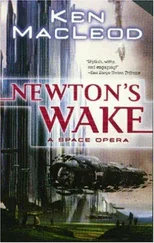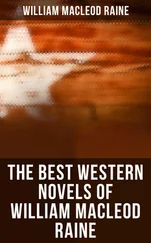On the other hand… they’re disturbingly not alien. They don’t breathe methane or have twenty legs. They’re mammals like us. Clearly there’s been a lot of parallel — or is it convergent? I can never remember — evolution. They’re made by DNA coding for proteins, albeit by different pathways. Their amino acids even have the same handedness as ours. We could — viruses and bacteria aside — eat the same food. (After cooking it, something they don’t do much of, though they dry and salt meat and sometimes heat it up to eat.) Is this a coincidence, or is it evidence of some deeper connection? After my talking-to from Grant the other day, I’m not sure whether to speculate. No, I positively don’t want to speculate. I want to observe and record.
OK. Street level is not where the action is. The buildings are tall and narrow. They go up to ten or more storeys and look rickety. Most of them are built of wood and are as if on stilts. The ground floor is usually open on all sides and, here at any rate, is used as a tip or as a shop or as a stable, heaped with the fodder for the huge beasts — they look more like hypertrophic rabbits than anything we might recognise as cattle — that the bat people eat. The real building begins at the next floor. Most floors are linked by ladders or stairs, but most of them have narrow landing-ledges where the bat people alight, to go in and out by the openings in the sides. These openings are fitted with awnings and screens of woven straw and basketwork, or of some kind of translucent parchment. Some of these screens are decorated with pictures of flowers and foliage. This decoration seems distinct from the big pictures that many of the buildings have on their frontage or sides, usually of bat people eating or drinking, or of devices and vehicles. They also bear symbols that is reckoned to be the aliens’ script, in very large font. They’re kind of like tags, but actual rather than virtual.
I levitate the POV and drift it into one of those first floors. The reception is patchier here — fewer vermin for our bugs to parasitise; all I can really make out is a row of bat people perched on a low bar and hunched over a long table, on which they are inscribing stuff in a paper book. In the corner there’s a big clunky machine that takes oblong cards in and spills a long roll of paper out. It could be a mechanical computer, or it could be a machine for printing wallpaper. I drift out the other side, over another and similar street, and look up. The streets are crisscrossed with cables, some of them electrical or telephonic (that’s power and comms) but most of them carrying little wood-frame cable-car contraptions that sometimes contain loads and sometimes have bat people sitting on, perching on, or clinging to them. I think most of the people on these are infirm in some way. Their bodies deteriorate with age. Their skin hangs loose, and they get diseases from bacteria and viruses. It’s amazing how deftly the flying bat people avoid the aerial obstructions, and each other in flight. Many fly much higher than the buildings, of course, and can ignore the traffic patterns below. Higher than them, very occasionally, I see dirigibles, but no other aircraft.
In among all the low flyers are the flying rats and flying insectoids. There are no birds in this sky, there is no birdsong in the air. Only the squeaks of the flying rats. The rats come in several sizes and one colour, a dirty dun. To my eyes and ears it’s a strangely impoverished sky. And in among the flying rats, dodging them and catching them and sometimes eating them, are the bat people’s young. They seem to start flying when they’ve grown to about a quarter the height of an adult — knee-high to a bat — and they roam the air in flocks, line the ledges of buildings, clutter and scream. We only know they’re the young and not some bigger species of flying rat from close observation, and seeing them fly back to their parental roosts in the evenings. (Where, it has to be said, the parents treat them with what looks like affection, enfolding them in their own big wings, stroking and grooming them and feeding them tidbits.) They have no adult supervision whatsoever, at least until they reach about half adult size, when you can see them lined up, upside down, on the rafters of some low buildings which are evidently a sort of primitive school.
I see one of these down the road, and in sudden curiosity I zip towards it. Inside it’s quite bright and the floor is covered with straw and droppings. The view is quite clear. The young bat people hang from beams overhead, bright eyes swivelling as they follow the actions of an adult who struts and frets beneath them, pointing to diagrams on the floor — scratched in the dust, often, with the foot-claw or some tool clutched in the foot — shouting and pointing. Sometimes the adult flies up and attacks some hapless youngster, beating fists against its huddled wings. I turn away and zip out, feeling nauseous, and blink out of the session. This sight has upset me. It makes me want to teach them a lesson.
A temptation we must learn to resist.
“Thanks,” said Horrocks, swinging off the rear saddle of the two-seater.
“Any time,” said the pilot, whose name Horrocks had failed to catch. The pilot glanced back and gunned forward, and the microlight bumped across the grass and rose into the sky.
Horrocks waved, turned away, and looked across a couple of hundred metres of parkland to the edge of Far Crossing. Complex voluted towers, tall trees, radial streets whose roadways ran out in a dribble of macadam on the grass as though their builders had lost heart. Atomic Discourse had called it a town, but she had been mistaken. It was a concentrated, condensed city. It had all the exciting parts of a city: the shops and studios and theatres and cafe’s, the lofts and cellars, the laboratories and nanofactories, and none of the dull bits: the dormitory suburbs, the marshalling yards, the car ports, the residential streets, the industrial parks. What White City and its like were for the older generation, Far Crossing and its like were for the young.
Horrocks followed floating virtual tags to the loft where Atomic worked. It was in a building near the centre, above a row of shops. Up two flights of stairs, which he negotiated with a firm grip on the handrail. The loft was about thirty metres long, with high sloped windows at either end. In this dim space a score of people worked on design units. Those old enough for their virtuality genes to have kicked in could have done it all in their heads, but all of them used screens or holograms: display, advertising, was part of the process. One or two showed modules or specialised areas — recycling plant, gardens — or mining schematics tagged to particular claims. Others had conjured up more ambitious schemes, for orbital habitats or surface projects for one or other of the system’s moons, or gas-mining processes for the ringed gas giant, or power stations for the mercurial. One even had a wild scheme for lifting water from the waterworld. For most of those here, as for most of the ship generation, such schemes and dreams would never be realised. They would be tested to destruction in the ship’s memory, stocked as it was with millennia’s worth of contingency and circumstance. Most of the minority that survived however many iterations of that it took to weed out the unfeasible wouldn’t attract enough interest or venture capital to make them viable. In developing them, however, their young creators would learn their own interests and abilities, their strong and weak points, perhaps to change or improve them, or to bring them to whatever project they eventually joined.
It was heartbreaking to watch.
Atomic, not to his surprise, sat beneath a vivid display of an entire habitat. Though built around a typical carbonaceous chondrite, it was unusual in having a transparent exterior and an outward orientation of the living space. Bright and beautiful, but too open and vulnerable.
Читать дальше












